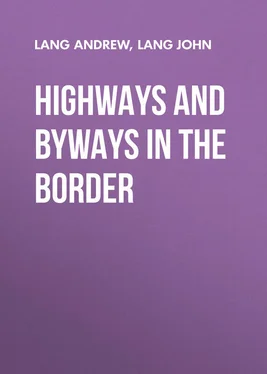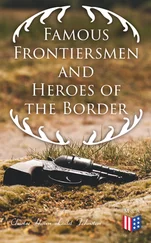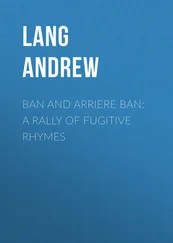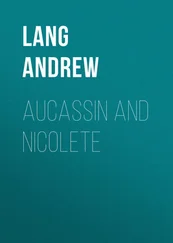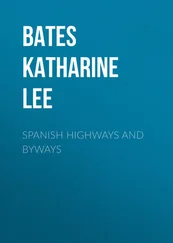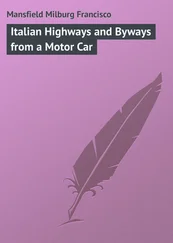Andrew Lang - Highways and Byways in the Border
Здесь есть возможность читать онлайн «Andrew Lang - Highways and Byways in the Border» — ознакомительный отрывок электронной книги совершенно бесплатно, а после прочтения отрывка купить полную версию. В некоторых случаях можно слушать аудио, скачать через торрент в формате fb2 и присутствует краткое содержание. Жанр: foreign_antique, foreign_prose, на английском языке. Описание произведения, (предисловие) а так же отзывы посетителей доступны на портале библиотеки ЛибКат.
- Название:Highways and Byways in the Border
- Автор:
- Жанр:
- Год:неизвестен
- ISBN:нет данных
- Рейтинг книги:4 / 5. Голосов: 1
-
Избранное:Добавить в избранное
- Отзывы:
-
Ваша оценка:
- 80
- 1
- 2
- 3
- 4
- 5
Highways and Byways in the Border: краткое содержание, описание и аннотация
Предлагаем к чтению аннотацию, описание, краткое содержание или предисловие (зависит от того, что написал сам автор книги «Highways and Byways in the Border»). Если вы не нашли необходимую информацию о книге — напишите в комментариях, мы постараемся отыскать её.
Highways and Byways in the Border — читать онлайн ознакомительный отрывок
Ниже представлен текст книги, разбитый по страницам. Система сохранения места последней прочитанной страницы, позволяет с удобством читать онлайн бесплатно книгу «Highways and Byways in the Border», без необходимости каждый раз заново искать на чём Вы остановились. Поставьте закладку, и сможете в любой момент перейти на страницу, на которой закончили чтение.
Интервал:
Закладка:
The countless war-like events that have taken place in and around Wark give to the place an interest which is perhaps hardly appreciated by the majority of us, and that interest is largely added to when one thinks of the many characters noted in history who from time to time sojourned within its walls. King Stephen lay here with a large army in 1137; Henry III remained in the castle for some time with his queen in 1255; in 1296 Edward I paid it a visit: Edward II mustered here his army in 1314 before his crushing defeat at Bannockburn, and, as already stated, Edward III, after he had driven off the Scottish marauding force, was entertained here for a time by the Countess of Salisbury.
Wark, one thinks, would be an ideal place in which to conduct excavations, – though, indeed, a little in that line has already been undertaken. In the volume for 1863-68 of the "Proceedings of the Berwickshire Naturalists' Club," it is recorded that a good many years ago Mr. Richard Hodgson had traced a wide sewer to the north of the castle, opening on to the river bank. This sewer is said to be so wide that it might easily have been used for the passage of men or material. Probably it was by this bidden way that Sir Robert Ogle in 1419 forced his way into the interior. But if the opening was so wide, how came it to be undefended? Was there a traitor inside who kept guard that night, a Northumbrian perhaps, masquerading as a Scot, whose burr did not betray him? In the course of his investigations Mr. Hodgson came also on a "long flight of stone steps leading from the keep to the outer court, with a portcullis about half way." Quantities of cannon balls have also been found, but there must surely be unlimited scope for the discovery of such like treasure trove in the fields surrounding the castle, and down by the ford where so many armies of both nations have crossed Tweed. They did not always make a leisurely and altogether unmolested passage.
CHAPTER III KELSO, ROXBURGH, TEVIOT, KALE, AND OXNAM
Coming now to Kelso, – with Melrose the most pleasing of the towns on Tweed, – we pass the meeting of the waters of Tweed and its largest affluent, Teviot. Kelso has a fine airy square, good streets, and an air of quiet gentility, neighboured as it is by Floors, the palatial seat of the Duke of Roxburghe, and by the trees of Springwood Park, the residence of Sir George Douglas.
We are now in the region of the clan of Ker of Cessford, from which the ducal family descends: while the Lothian branch descends from the Kers of Fernihurst. The name, Ker, is said to mean "left handed," and like the left handed men of the tribe of Benjamin, the Kers were a turbulent and grasping-clan, often at deadly feud with their neighbours and rivals, the Scotts of Buccleugh. These, with the Douglases, for long predominant, were the clans that held the Marches, and freely raided the English Borderers, while they fought like fiends among themselves.
It is in the early sixteenth century that the chiefs of the two branches of Ker, or Kerr, and of the Scotts, become more and more prominent in history, both as warriors and politicians. From these Houses the Wardens of the Border were often chosen, and were not to be trusted to keep order; being more disposed to use sword and axe. Within a century the chiefs throve to Earl's estate, and finally "warstled up the brae" to Dukedoms.
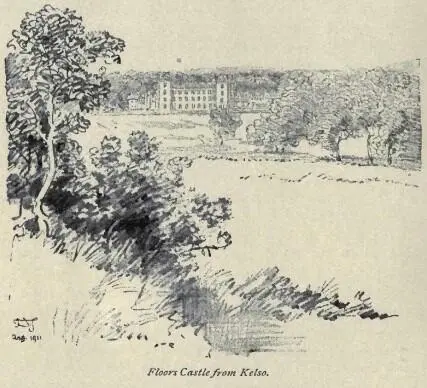
Meanwhile the Douglases, for long the most powerful House in Scotland, the rivals of the Crown, were crushed by James II, and of the Douglases, Sir George, of Springwood Park, is descended from the House of Cavers, (on Teviot, below Hawick), scions sprung from Archibald, natural son of the Earl of Douglas who fell at Otterburne (1388) and is immortal in the ballad. The whole land is full of scenes made famous by the adventures of these ancient clans; they may be tracked by blood from Hermitage Castle to the dowie dens of Yarrow and the Peel Tower on the Douglas burn.
Sir Herbert Maxwell, in "The Story of the Tweed" (p. 139) not unnaturally laments the "sadly suburban" name of Springwood Park, standing where it ought not, in place of the ancient name of Maxwell, originally "Maccus whele," "the pool of Maccus," on Tweed.
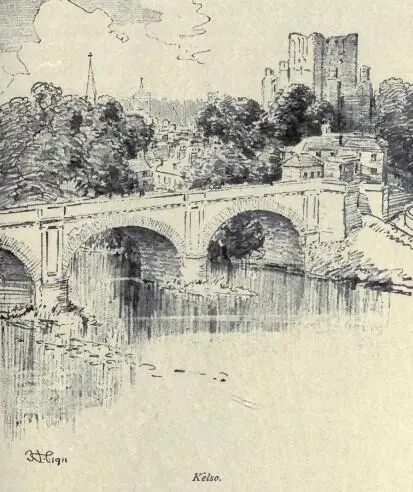
Maccus was a descendant of the primeval Maccus, who, before the Norman Conquest, signed himself, or was described, as Maccus Archipirata, "the leading pirate." To a later Maccus David I gave the salmon fishing at Kelso; the pool, called "Maccus whele" became Maxwell, and the lairds "de Maxwell." The Maxwells moved to the western Border to Caerlaverock and into Galloway; and of all this history only the name, "Max wheel," of a salmon cast below the pretty bridge of Kelso, is left.
The name Kelso is of Cymric origin: calch myadd. "Chalk hill." To be sure, as the man said of the derivation of jour from dies , the name is diablement change en route . The ruins of Kelso Abbey are the chief local remains of the Ages of faith. When David I, not yet king, brought French Bénédictines to Scotland, he settled them in Ettrick Forest. Here they raised the schele chirche – the Monastery, on a steep hill above Ettrick (now Selkirk), and here they "felt the breeze down Ettrick break" with its chill showers, and wept as they remembered pleasant Picardy; the climate of Selkirk being peculiarly bitter. David, when king, moved his Benedictines to the far more comfortable region of Kelso, or "Calkow," where they began to build in 1128. The style of their church is late Norman, and the tower was used in war as a keep in the fierce wars of Henry VIII. The place was gutted and the town burned by Dacre, in 1523; and suffered again from Norfolk, in 1542, and Hertford in 1545. Henry VIII chivalrously destroyed this part of the border from the cottage to the castles of the Kers and the pleasant holy places of the Church, during the childhood of his kinswoman, Mary Stuart, Queen of Scots. His aim was always to annex Scotland; and, of course, to introduce the Gospel. In 1545, after overcoming the garrison of the church tower, Hertford's men wrecked the whole place, leaving little more than we see to day; though that little is much compared with what the Reformers have left of St. Andrews and Lindores.
Kelso saw more than enough of very ugly fighting in those days; not even her monks stood aloof when blows fell fast and their cloisters were threatened. In 1545, twelve monks and ninety laymen gallantly held the Abbey against the English, and when at length Hertford's guns created a practicable breach, they retreated to the church tower. Hill Burton says, in his History of Scotland, that then "the assault was given to the Spaniards, but, when they rushed in, they found the place Kelso Abbey. cleared.
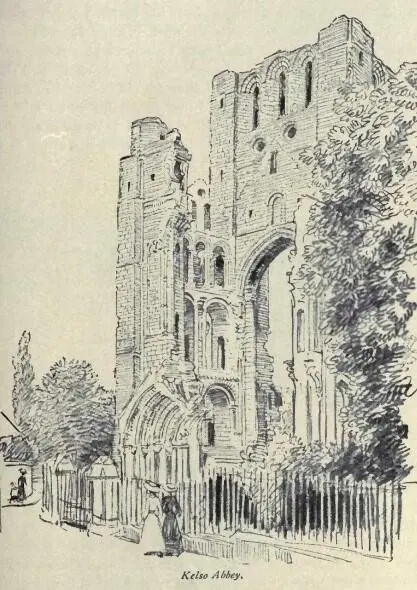
The nimble garrison had run to the strong square tower of the church, and there again they held out. Night came before they could be dislodged from this their last citadel, so the besiegers had to leave the assault till the morning, setting a good watch all night about the house, which was not so well kept but that a dozen of the Scots in the darkness of the night escaped by ropes out at back windows and corners, with no little danger of their lives.
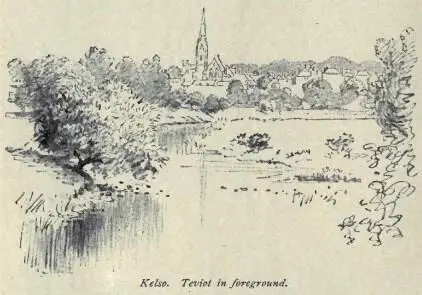
When the day came, and the steeple eftsoons assaulted, it was immediately won, and as many Scots slain as were within." So may Kelso Abbey be said to have been finally wrecked; though, fifteen years later, the Reformers did their own little bit of work in the same line.
Читать дальшеИнтервал:
Закладка:
Похожие книги на «Highways and Byways in the Border»
Представляем Вашему вниманию похожие книги на «Highways and Byways in the Border» списком для выбора. Мы отобрали схожую по названию и смыслу литературу в надежде предоставить читателям больше вариантов отыскать новые, интересные, ещё непрочитанные произведения.
Обсуждение, отзывы о книге «Highways and Byways in the Border» и просто собственные мнения читателей. Оставьте ваши комментарии, напишите, что Вы думаете о произведении, его смысле или главных героях. Укажите что конкретно понравилось, а что нет, и почему Вы так считаете.
